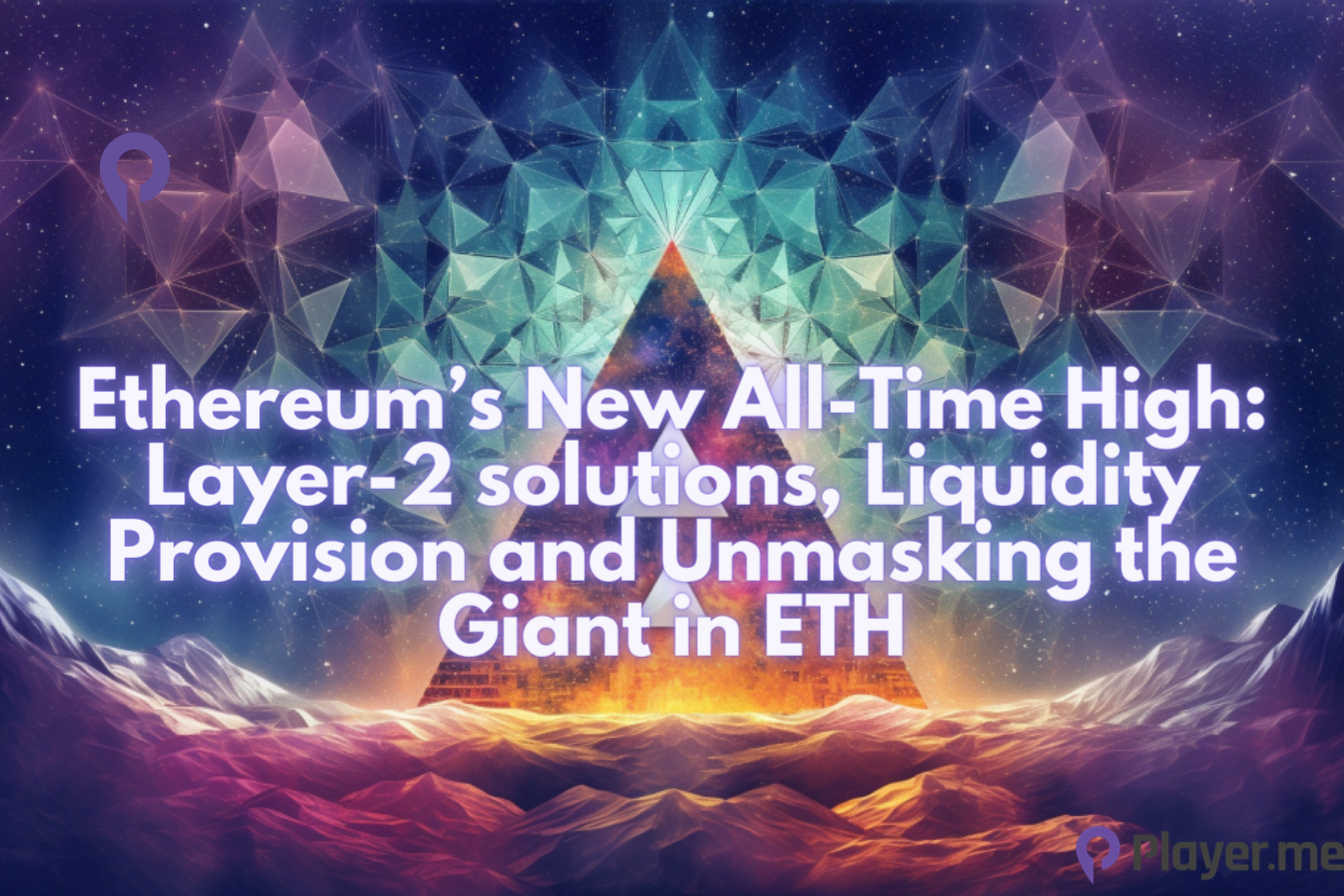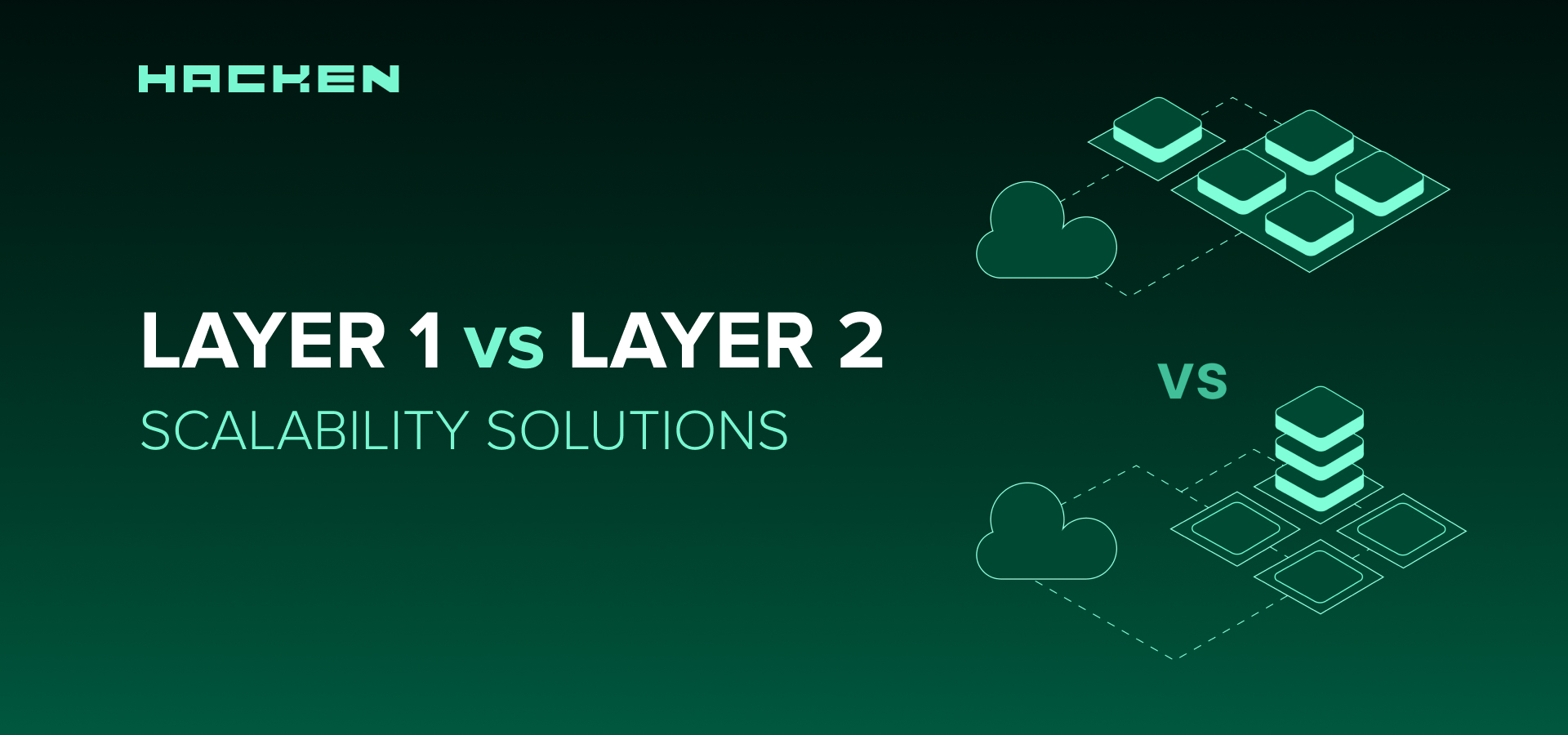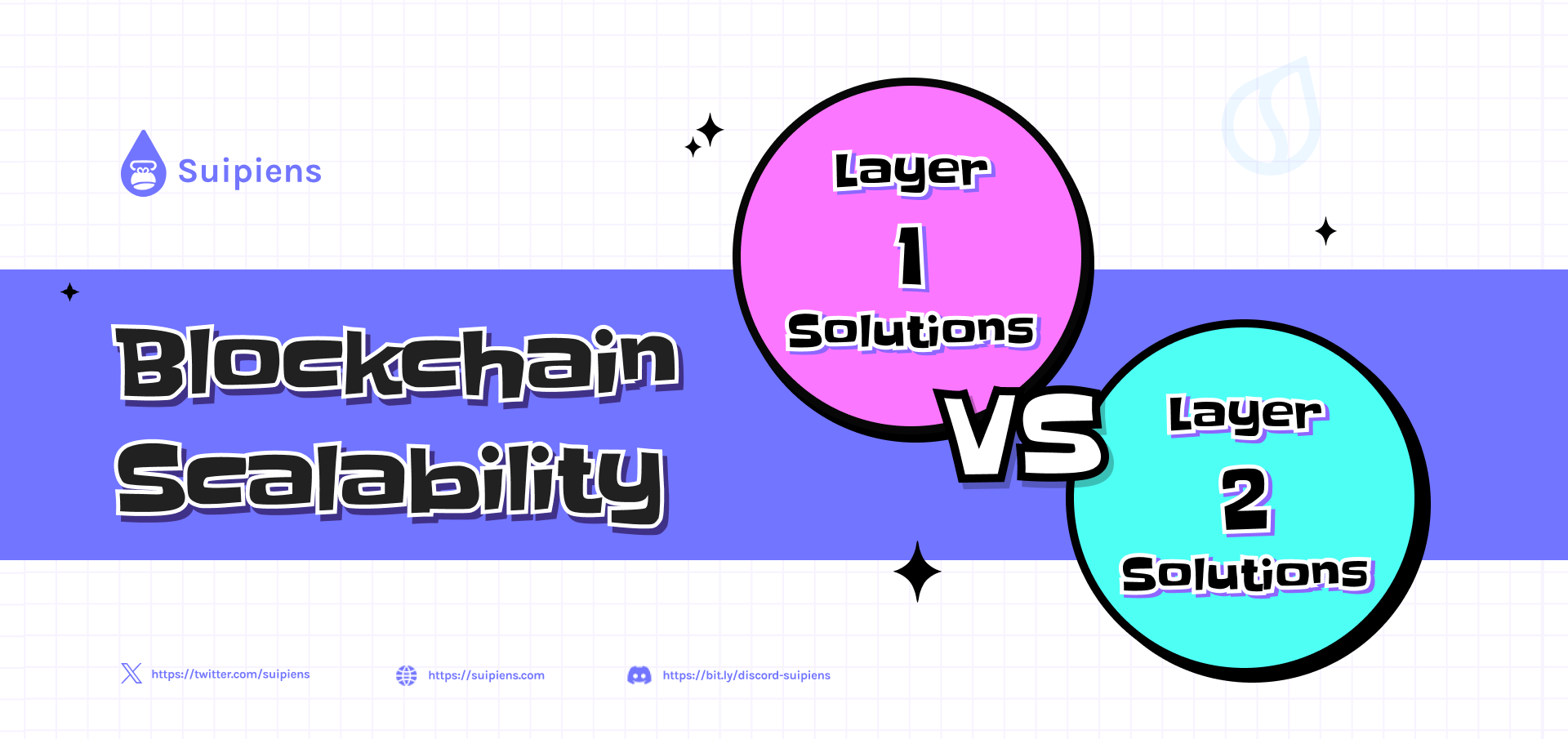Ethereum's Layer 2 Solutions - Part 1
Imagine a very popular road, one that everyone wants to drive on, all at the same time. This road, you see, gets quite crowded, leading to long waits and, frankly, higher tolls just to get where you are going. Ethereum, a truly amazing digital platform, is a bit like that busy road. It's fantastic at what it does, allowing people to do all sorts of things with digital money and smart programs, but its popularity has brought some challenges. So, when many, many people try to use it for their transactions, things can slow down quite a bit, and the fees for getting your transaction through can go up.
This situation, you know, makes it a little less smooth for everyday uses, especially for smaller payments or when someone wants to do something quickly without spending too much. People started thinking about ways to keep the main Ethereum road clear and efficient, while still allowing everyone to get where they need to go. They needed a way to handle more traffic, more transactions, without making the main road wider, which is a very big job and takes a long time to do.
This is where the clever idea of "Layer 2 solutions" comes into play. Think of these as special side roads or express lanes that connect to the main road. They help process a lot of the traffic off to the side, then bring the finished work back to the main road in a neat, summarized way. This makes the whole system much faster and much more affordable for everyone involved, which is pretty neat, actually. We are just going to look at some of the ways these solutions help out.
- Lavaxgrll Leaked Sex Tape
- Rebecca Grant Twerking
- August Berlinger Nude
- Even George Floyd
- Mikayla Leaked Video
Table of Contents
- What is the Big Idea Behind Layer 2 Solutions?
- Why Do We Need Different Kinds of Ethereum's Layer 2 Solutions?
- A Look at Some Types of Ethereum's Layer 2 Solutions
- What Makes These Types of Ethereum's Layer 2 Solutions Different?
- Looking Ahead for Types of Ethereum's Layer 2 Solutions
What is the Big Idea Behind Layer 2 Solutions?
The main idea behind these Layer 2 helpers is to take some of the work off of Ethereum's main chain, which people often call Layer 1. Think of Layer 1 as the big, important ledger where everything eventually gets written down for good. But, you know, if every single tiny detail has to be written there immediately, it can get very crowded. So, Layer 2 systems act like assistants who handle many smaller tasks away from the main ledger.
These assistants gather up a whole bunch of these smaller tasks, process them efficiently, and then, basically, just tell the main ledger the final outcome. It's a bit like someone collecting all the small purchases at a store throughout the day and then, at closing time, sending one big report to the main accounting office instead of sending a report for every single item sold. This really helps to keep the main system from getting overwhelmed, which is pretty useful, actually.
The goal is to make using Ethereum much smoother for everyone. When you use a Layer 2 solution, your transactions can happen much faster and often for a lot less money. This means more people can use Ethereum for more things, like sending small amounts of digital cash or playing games, without having to worry about high costs or long waits. It's about making the whole experience more friendly for everyday people, which is something we all appreciate, I mean, don't we?
- Dj Envy Halloween 2024
- Beterbiev Vs Bivol Compubox
- Onic Lydia Viral Link
- Sex Jack Doherty
- Culos En La Calle
Why Do We Need Different Kinds of Ethereum's Layer 2 Solutions?
You might wonder why there isn't just one type of helper for Ethereum. Well, it's a bit like needing different kinds of tools for different jobs. Some tasks might need super-fast processing, while others might need the highest level of security possible, even if it takes a little longer. The main Ethereum network, while very secure, has a limit to how many operations it can handle per second, which means it gets bogged down when demand is high. This leads to what people call "congestion" and "high gas fees."
High gas fees are, basically, the cost you pay to get your transaction included on the Ethereum main chain. When lots of people want to make transactions, they essentially bid against each other to get their transaction processed faster, which drives these fees up. This can make simple actions, like moving a small amount of digital money, surprisingly expensive. So, different Layer 2 solutions try to tackle this problem in slightly different ways, each with its own strengths and weaknesses, you see.
Some of these solutions focus on making things incredibly quick, almost instant, for certain types of interactions. Others put a strong emphasis on making sure everything is super secure, even if it means a tiny bit more time is needed for verification. Because there are so many different ways people want to use Ethereum, it makes sense to have a variety of these helper systems. This way, different applications can pick the one that works best for their particular needs, which is a really practical approach, actually.
A Look at Some Types of Ethereum's Layer 2 Solutions
When we talk about the various ways to help Ethereum, a big group of these helpers are called "Rollups." The name "rollup" kind of gives you a hint about what they do: they "roll up" many, many transactions into one single bundle. This bundle is then sent back to the main Ethereum chain. Instead of sending hundreds or thousands of individual transactions, only one summarized transaction needs to be recorded on the main chain. This saves a lot of space and makes everything much more efficient, which is a pretty clever trick, in a way.
There are a couple of main kinds of Rollups that people talk about a lot. Each one has its own special way of making sure that the transactions they've bundled up are correct and honest before they get put onto the main Ethereum ledger. These different approaches have their own benefits, and sometimes, too, their own things to consider. It’s all about finding the right balance for what you need to do, more or less.
How Do Optimistic Rollups Work Among the Types of Ethereum's Layer 2 Solutions?
Optimistic Rollups get their name because they are, well, "optimistic" about things. They assume that all the transactions bundled up and sent to the main Ethereum chain are correct and honest right from the start. They don't check every single detail immediately. Instead, they give a certain amount of time, usually about a week, for anyone to challenge or dispute if they think something is wrong. This period is sometimes called a "challenge window" or "dispute period."
During this challenge time, if someone spots a problem with the bundled transactions, they can provide proof that something isn't right. If their proof is correct, the dishonest transaction is removed, and the person who tried to cheat might even lose some of their deposited funds as a penalty. This system relies on people watching out for each other, which means it encourages good behavior. It's a bit like a trust-but-verify system, you know, where you trust until someone shows you a reason not to.
Because they don't have to do a lot of complex checks upfront, Optimistic Rollups can be quite quick at processing many transactions off-chain. The main thing to remember is that if you want to move your funds from the Layer 2 back to the main Ethereum chain, you usually have to wait for this challenge period to pass. This wait time is a trade-off for the faster and cheaper transactions on the Layer 2 side, but it's a small price to pay for the benefits, often.
What Are ZK-Rollups and Their Place in Types of Ethereum's Layer 2 Solutions?
ZK-Rollups, which stands for "Zero-Knowledge Rollups," take a different approach to making sure things are honest. Instead of assuming everything is fine and waiting for someone to prove otherwise, they use a special kind of mathematical proof to show that all the transactions in a bundle are correct. This proof is generated off-chain, and it's then sent to the main Ethereum chain. The amazing thing about these proofs is that they can verify the correctness of many transactions without revealing any of the private details of those transactions. It's pretty clever, really.
This "zero-knowledge" part means that you can prove something is true without sharing any other information about it. Think of it like proving you know a secret without actually telling the secret. Because of this, when a bundle of transactions from a ZK-Rollup arrives at the main Ethereum chain, it comes with a mathematical guarantee that everything inside is valid. There's no need for a waiting period for challenges, which means transactions can be finalized much faster on the main chain, which is a big plus for some uses, too.
The technology behind ZK-Rollups is quite advanced and can be more complex to build than Optimistic Rollups. However, once they are up and running, they offer very fast finality and strong security assurances. This makes them a really strong contender for situations where speed and immediate certainty are very important. They are, in some respects, a truly powerful way to make Ethereum more usable for a huge number of people, which is the main goal, of course.
What Makes These Types of Ethereum's Layer 2 Solutions Different?
So, we've looked at Optimistic Rollups and ZK-Rollups, and you can see they both aim to help Ethereum handle more activity, but they go about it in distinct ways. The key difference, you know, really comes down to how they prove that the transactions they process are good. Optimistic Rollups use that "innocent until proven guilty" idea, giving a window for anyone to step forward with a challenge if they spot a mistake. This means that moving your digital assets back to the main Ethereum chain usually involves a waiting period, typically a week or so, which is something to consider.
ZK-Rollups, on the other hand, generate a mathematical proof that says, "Hey, all these transactions are definitely correct, trust us!" This proof is checked by the main Ethereum chain, and if it passes, the transactions are considered final almost immediately. There's no waiting period like with Optimistic Rollups. This makes ZK-Rollups very appealing for applications that need very quick confirmation of transactions, which is pretty useful for things like fast payments or trading, you see.
However, generating these "zero-knowledge proofs" is a pretty heavy computational task. It takes a good deal of processing power to create them, which can make ZK-Rollups a bit more complicated to set up and run at first. Optimistic Rollups are generally simpler to build and deploy, but they have that waiting period. So, it's a bit of a trade-off: speed and immediate certainty with ZK-Rollups versus a bit more simplicity and a waiting period with Optimistic Rollups. Different projects will choose the type that best fits what they are trying to achieve, which is very common in technology, actually.
Looking Ahead for Types of Ethereum's Layer 2 Solutions
While we've focused on Rollups, especially Optimistic and ZK varieties, it's worth knowing that these aren't the only kinds of helpers out there for Ethereum. There are other ideas, too, like Plasma, which creates child chains that connect to the main one, and State Channels, which are like private two-way streets for specific interactions. We also have Validiums, which use similar proof technology to ZK-Rollups but store data off-chain in a different way. Each of these approaches, you know, offers its own set of benefits and might be a good fit for certain situations.
The world of Ethereum's Layer 2 solutions is still growing and changing quite a bit. Developers are always coming up with new ways to make these systems even better, faster, and more user-friendly. The goal is always the same: to make Ethereum a truly global, accessible platform for everyone, no matter how many people want to use it or what they want to do with it. It's an exciting time to watch these innovations unfold, and they really are making a big difference for how people interact with digital money and programs, as a matter of fact.
This discussion of the various types of Ethereum's Layer 2 solutions, particularly the Rollups, just scratches the surface of how these clever systems help make the main Ethereum network more efficient. By bundling transactions and using smart ways to verify them, these Layer 2s allow for many more operations to happen quickly and cheaply, bringing the vision of a widely used, accessible Ethereum much closer to reality. We've covered the basics of Optimistic and ZK-Rollups, their core ideas, and how they differ in their approach to getting things done, providing a good foundation for understanding these important pieces of the puzzle.



Detail Author:
- Name : Giovanny Harvey
- Username : fprice
- Email : stamm.bulah@hotmail.com
- Birthdate : 1977-09-24
- Address : 36149 Jaylon Inlet Isabelbury, OK 42543
- Phone : +1-680-460-3911
- Company : Harvey-Stehr
- Job : Set Designer
- Bio : Soluta possimus aliquam aut ex rerum. Nisi autem aut assumenda modi. Fugit sit voluptates cum aspernatur fugiat.
Socials
linkedin:
- url : https://linkedin.com/in/sid7150
- username : sid7150
- bio : Ut et vero rem.
- followers : 4568
- following : 463
instagram:
- url : https://instagram.com/sid_id
- username : sid_id
- bio : Illum et aliquam quas est quae cum saepe. Et fugit vero ut. Dolorem dolor cupiditate qui adipisci.
- followers : 3927
- following : 1417
twitter:
- url : https://twitter.com/srau
- username : srau
- bio : Atque et odio nihil earum. Fugiat libero aut eos autem expedita explicabo quae. Doloribus a ea velit amet quia.
- followers : 4053
- following : 1053
tiktok:
- url : https://tiktok.com/@sidrau
- username : sidrau
- bio : Mollitia laboriosam nesciunt rerum rerum sit atque.
- followers : 6910
- following : 1592
facebook:
- url : https://facebook.com/raus
- username : raus
- bio : Voluptas voluptate voluptates ducimus corporis.
- followers : 915
- following : 1155